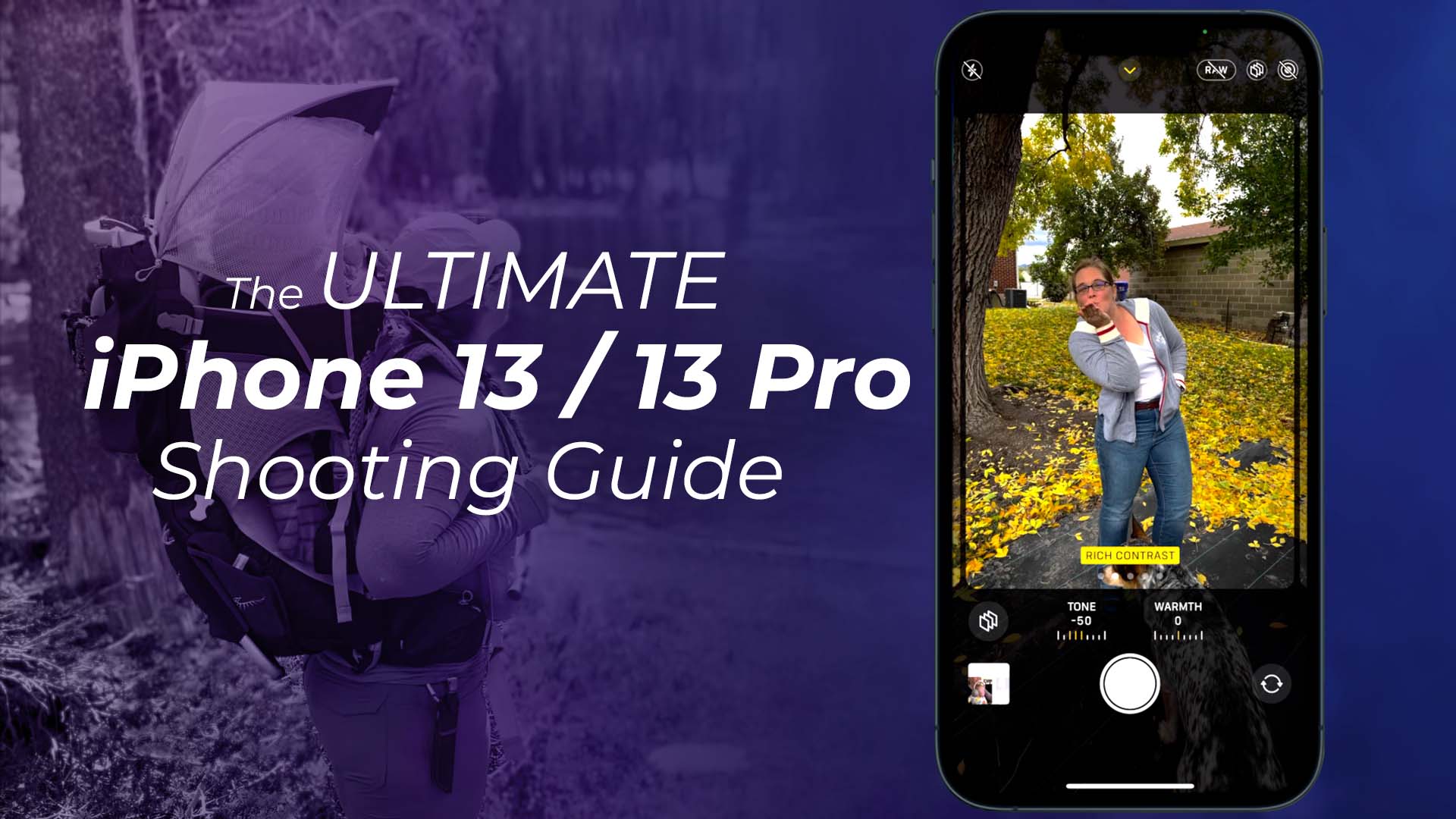
The Ultimate iPhone 13 / 13 Pro Shooting Guide
What's it like to shoot photos and videos on the iPhone 13? Is Cinematic Video worth the hype? How EXACTLY is Night Mode working for Photos & Video? Is ProRes any good? What kind of Dynamic Range can I get out the phone? How do I get ProRAW off my phone? What happens if I shoot with Dolby Vision HDR and want to share it on Facebook, Instagram or TikTok? Should I be filming with 3rd party apps?
I answer these questions and more in this Ultimate Guide to the new features of the iPhone 13 / 13 Pro and iOS 15.
TOPICS COVERED
PHOTOS
0:00 Introduction
0:54 Conclusions at the Beginning
2:24 ProRAW
3:40 Airdropping ProRAW / DNGs
6:00 ProRAW Dynamic Range
6:31 Setting & Adjusting Photographic Styles
7:58 Exposure Compensation in Photos
9:38 Recommended Exposure Compensation for Bright Environments
10:43 Portrait Mode ƒ-Stop11:28 Macro Mode
12:46 Night Mode
15:22 Night Mode Assistance
16:01 Night Mode & ProRAW
16:48 Night Mode & The Milky Way
17:39 Night Mode Portraits
18:05 Keeping Consistent Photo Settings
SDR VIDEO
18:40 Cinematic Video
19:27 Limitations of Cinematic Video
20:14 Cinematic Video Limited Resolution
20:43 Cinematic Video Rack Focus
24:09 Variable & Adaptive Frame Rates
25:25 Shooting Video with HEVC
26:17 Transferring Slow Motion Video
27:25 Image Stabilization
28:36 Turning Off Stabilization
29:02 Lens Flares & Ghosting
HDR VIDEO
31:46 ProRes Video
34:06 Time Laps & Slow Motion in HDR?
34:34 HDR Cinematic Video
34:57 Sensor Dynamic Range
37:31 Using ND to Maximize Dynamic Range
38:10 How the Default Camera Exposes in HDR
40:47 Noise in the Darks
41:29 Dolby Vision & HDR
43:32 The iPhone's Screen Dynamic Range
45:08 Sharing (Dolby Vision) HDR Video
47:55 Sharing HDR to SDR from a Computer
48:33 Verifying the HLG Look
THIRD PARTY APPS
49:25 3rd Party Apps
50:01 3rd Party HLG Scene & Log
50:35 Higher Bitrate Modes
50:55 The Differences Between Third Party Apps
52:07 Should You Use 3rd Party Apps?
52:38 Miscellaneous Notes
53:22 Conclusion
IOS 15.1 PRORES UPDATE (& OTHER NOTES)
Here's a few notes from the iOS 15.1 update:
ProRes HDR
ProRes WILL shoot in HDR, using a STANDARD HLG with BT.2020 color primaries (NO DOLBY VISION). The HLG essence in the ProRes is the same as the HLG in the HEVC, so you'll still need to do the same exposure adjustments to account for Apple's exposure s-curve, but you'll see different looks when you play back the files on your phone or on your Dolby Vision enabled computer. In DaVinci Resolve, Adobe Premiere, and Final Cut Pro X they will look the same.ProRes VersionIn the default camera app ProRes captures in 422 HQ; in FiLMiC Pro I can capture in 422 Proxy, 422 LT, 422, and 422 HQ
Editing ProRes on the Phone
If you change the look of the ProRes on the phone, your phone will recompress the file as a 10 bit HEVC when airdropping, similar to how ProRAW will export a JPEG / HEIC when airdropping. In this case the HEVC file will be 10 bit HLG HDR WITHOUT any Dolby Vision metadata.
Enabling ProRes
There's a toggle in the Camera Settings -> Formats menu below the toggle for ProRAW. Then, when you're shooting in NORMAL video, you'll see a similar button outside the frame like the RAW button for enabling DNG, this one labeled ProRes. Tap it to capture in ProRes at any give time. There's also a toggle labeled "Pro" on the right hand side (when shooting in landscape) that will call up a small menu next to the exposure slider toggle where you can toggle ProRes on and off
Media Remaining Counter
When shooting in ProRes in the Default Camera App, Apple's been kind enough to give a countdown indicator for how many minutes you can capture before you've filled up your phone.
File Size
ProRes is about 15x bigger than Apple's max bit rate for HEVC, and about 5x bigger than FiLMiC Extreme 150mbps. You're going to chew through storage really quickly
Quality vs. HEVC
In the default app there IS a quality difference between ProRes and HEVC, since Apple's HEVC captures at a lower bit rate. With the HEVC you'll get some mild smoothing in the lows from the compression, while ProRes will retain more of the noise. The noise profile after 15.1 release is a lot better in ProRes than my initial tests with it when making this video, but the HEVC compression was acting as a noise filter and you'll definitely find more noise in the lows.
ProRes Modes
ProRes only works in standard Video mode. It does not work in Cinematic, Slow Motion, or Time Lapse modes.
EDITING CINEMATIC VIDEO
In the video I stated that the Depth of Field effect was baked into the video. It's not, and you can change the depth of field in the Photos app until you export it, which happens automatically when you try to transfer or Airdrop your file. You can theoretically Airdrop with the All Camera Data toggle enabled and then edit the focus point, but you'll need to follow Apple's guide to transferring and importing the clips here: https://support.apple.com/en-us/HT212859. As a note, I was unable to transfer the folder Apple talks about even though I am running 15.1 - I'll update my MacOS version shortly and test it again, but for now I was only transferring the baked in content.
DISABLE AUTOMATIC MACRO SWITCHING
There's now a toggle in the Camera settings to disable the automatic macro mode. There is no way to reenable it from the Camera's app so you'll have to switch to the wide angle and bring it in close to whatever you're trying to shoot in Macro.